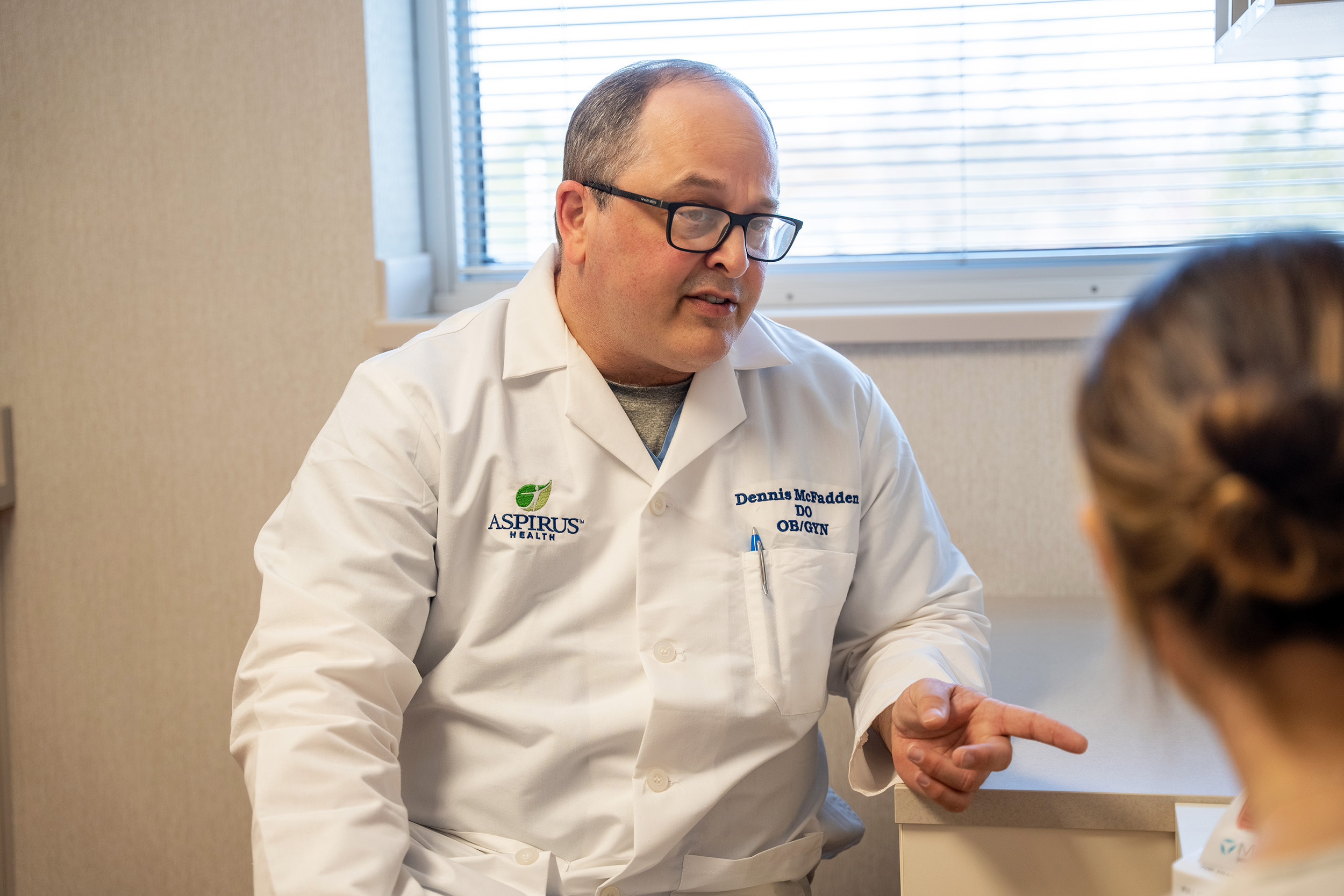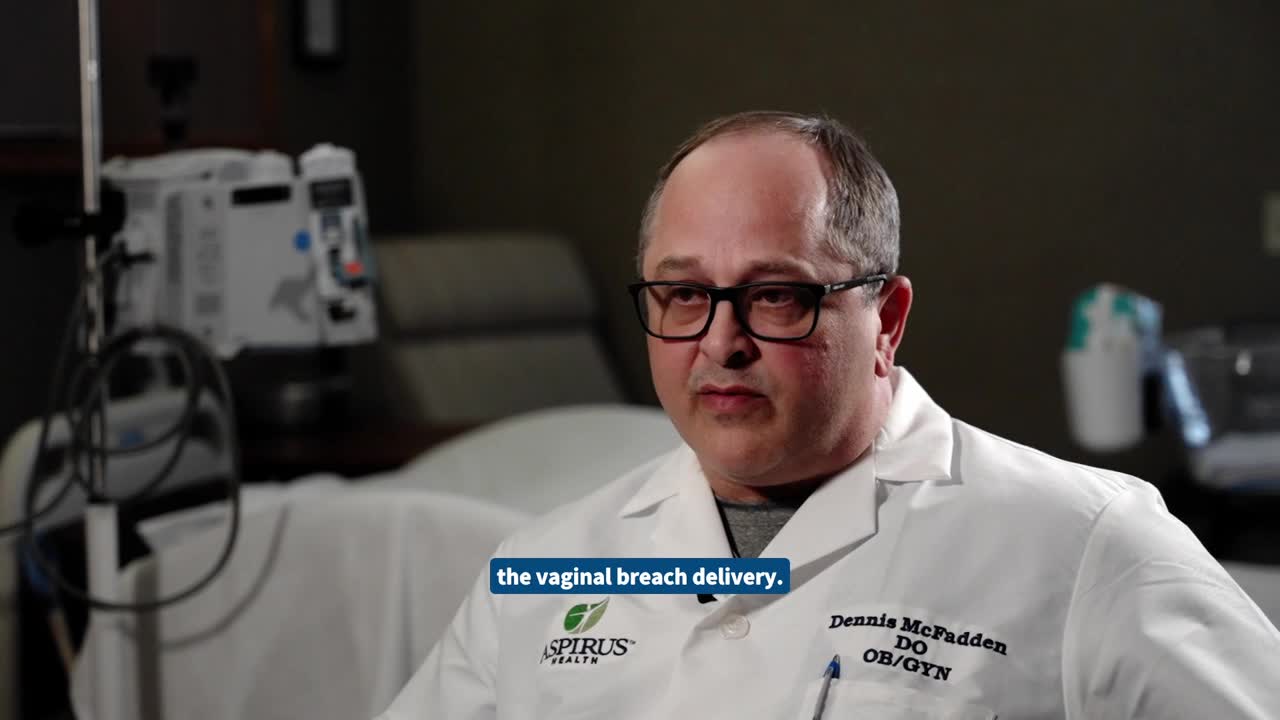5 Myths and Facts about C-Sections
April is National Cesarean Awareness Month
4/5/2024

Dr. Dennis McFadden, Board-Certified OBGYN with Aspirus Health
Around 10,000 babies are welcomed into the world every day in the United States, with each baby having a unique birth and delivery.
While vaginal births are most common, a cesarean birth (commonly referred to as a “c-section”) is sometimes necessary. A c-section is the surgical delivery of a baby through an incision made in the mother's abdomen and uterus.
It is a necessary form of delivery for survival of mother and/or child when delivery or pregnancy complications occur, making vaginal delivery dangerous.
“It’s important to reiterate to mothers that a c-section is in no way a failure,” says Dr. Dennis McFadden, a Board-Certified OB/GYN with Aspirus Health. “Although they can be intimidating, a c-section is a lifesaving technique that can avoid catastrophic events that may otherwise happen through a vaginal delivery,” he explains.
“A baby might be delivered via c-section for many reasons. A few examples could be that the baby is breech, meaning it’s not positioned correctly; the mother develops preeclampsia, a serious blood pressure condition; or the cervical canal is unable to dilate.”
Here are five myths and facts about c-sections:
Myth: C-sections are dangerous.
Fact: Due to today’s advanced medicine, a C-section is generally a very safe procedure, but like any type of surgery, it does carry a risk of complications. The level of risk will depend on whether the procedure is planned or carried out as an emergency, and the general overall health of the mother.
Myth: A mother cannot have a vaginal birth after cesarean (VBAC).
Fact: For many years, women who had a previous c-section were encouraged to skip vaginal delivery for subsequent births. Now, a vaginal birth after cesarean (or VBAC) is considered a safe option for many women and their babies.
Myth: It’s okay to have a lot of C-sections.
Fact: Women who have multiple repeat cesarean deliveries are at increased risk for complications. Although there is no limit or exact number on how many c-sections a women can have, each one increases the risk.
Myth: You can’t breastfeed after a c-section.
Fact: Breastfeeding after a C-section is possible. While you may face challenges, most who wish to breastfeed can successfully do so after their c-section.
Myth: C-section recovery is easy.
Fact: A c-section is a major surgery that requires time to recover. Every patient has a different labor and delivery experience, but in general, it takes four to six weeks to completely heal from a c-section.
Dr. McFadden sees patients at Aspirus OB/GYN Associates in Wausau. To schedule an appointment, visit aspirus.org.

Back to all Posts